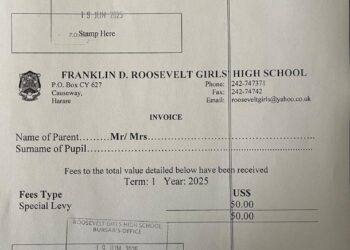AT least 13,27% of Zimbabwe’s countryside faces an extreme high risk of being devoured by veld fires with four provinces prone to the menace, a Cabinet minister has said.
Zimbabwe launched this year’s National Veld Fire Week in Bulawayo under the theme: “Prevent Veld Fires — Protect the Environment and Livelihoods.”
Every year the fire week is launched in the second week of May, according to the country’s National Fire Strategy.
Speaking during the fire week launch in Waterford in Bulawayo, Environment, Climate and Wildlife minister Sithembiso Nyoni said Zimbabwe was facing extreme fire risks due to the El Niño weather phenomenon.
“The low risk zones cover 12,42% while an area which is in extreme high risk to veld fires covers 13,27% of the country,” she said.
The provinces highly exposed to the veld fires are Mashonaland Central, Mashonaland East, Mashonaland West and Manicaland.
“The districts that fall in extreme risk are Nyanga, Mutasa, Makoni, Mutare, Bindura, Marondera, Chikomba, Hwedza, Harare and Zvimba. Veld fires have a direct impact on agriculture, resulting in the destruction of crops, grain, pastures, equipment and the subsequent food shortages, financial and job losses.”
Over the years veld fires have directly impacted on agriculture, resulting in the destruction of crops, grain, pastures, equipment and job losses. The fires have also claimed many lives.
“Eventually, this has negative impacts on the nation’s gross domestic product and food security,” she said.
Zimbabwe has a savannah ecosystem with seasonal variations from a hot and wet summer to a cold and dry winter, thus increasing its susceptibility to veld fires, especially during the dry period.
“Generally the dry season increases fuel load due to the dry rangeland and presence of windy conditions thus creating fertile ground for the start of veld fires.
“However, fires are normal in the Savannah ecosystem, but what becomes problematic are veld fires that are often uncontrolled which result in loss of large tracts of land, property and lives.
“The fire season is from July 31 to October 31. The country is currently experiencing El Niño-induced effects with a likely elongated dry season, thus again increasing vulnerability to veld fires,” she added. This year’s veld fire restriction period will run from July 1 to November 30.
“In 2023, a cumulative total of 858 361,9 hectares were destroyed by veld fires from 3 717 veld fire incid3nts, while the average burnt area per fire incid3nt was 230,9 hectares, down from 233 hectares in 2022,” she said.
There was, however, a near 50% reduction in the area affected by veld fires compared to 1 730 265 hectares destroyed in 2022.
“The decrease in average areas burnt in 2023 was largely attributed to technical assistance rendered to communities, environmental education, training and capacity development and awareness campaigns done countrywide in collaboration with various stakeholders. Unfortunately, during the same fire restriction period, one life was lost,” she added.
The number of de@ths due to veld fires dropped by 94% in the 2023 season compared to 2022.
Veld fires claimed more than 100 people between 2013 and 2023.
SOURCE : NEWSDAY










